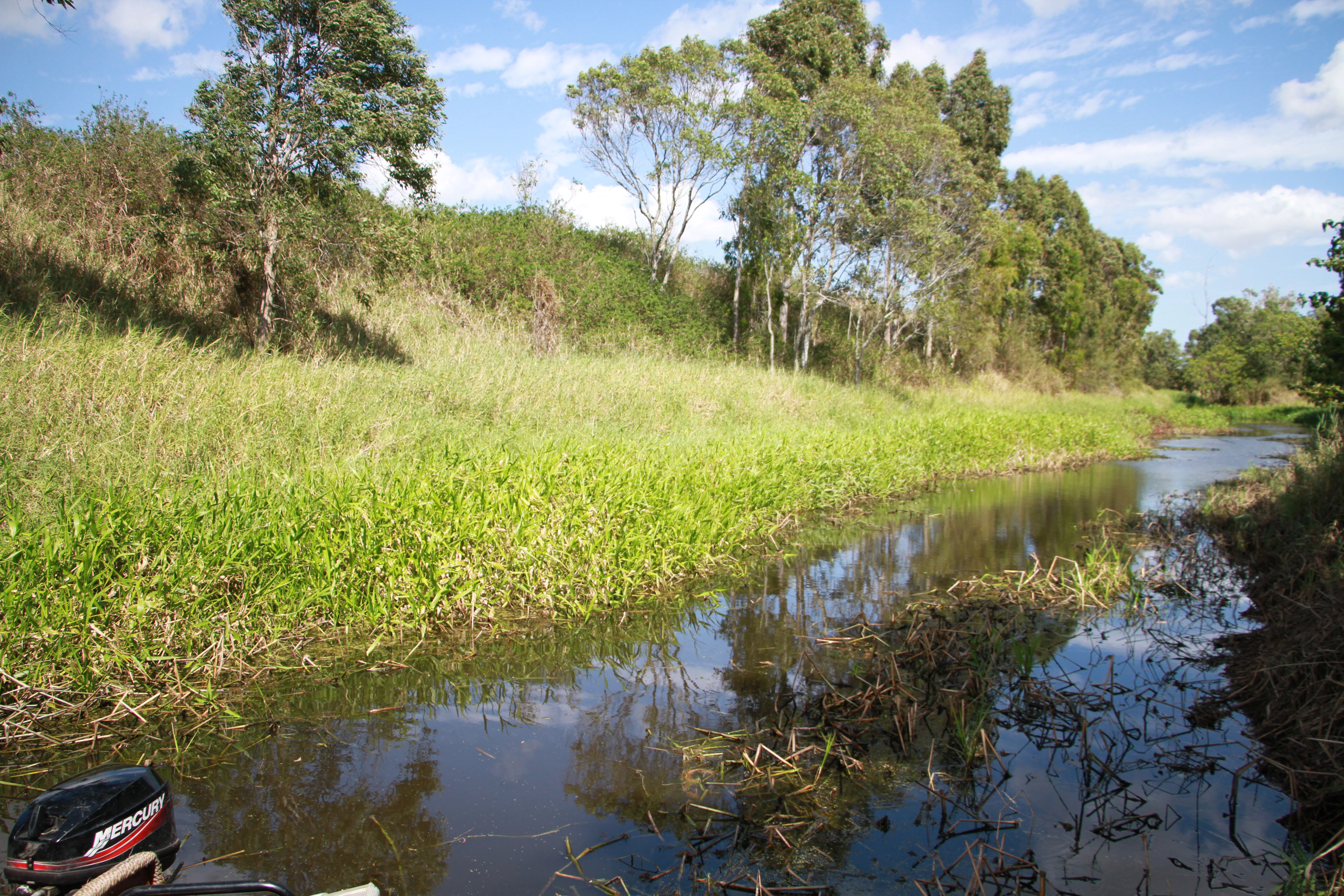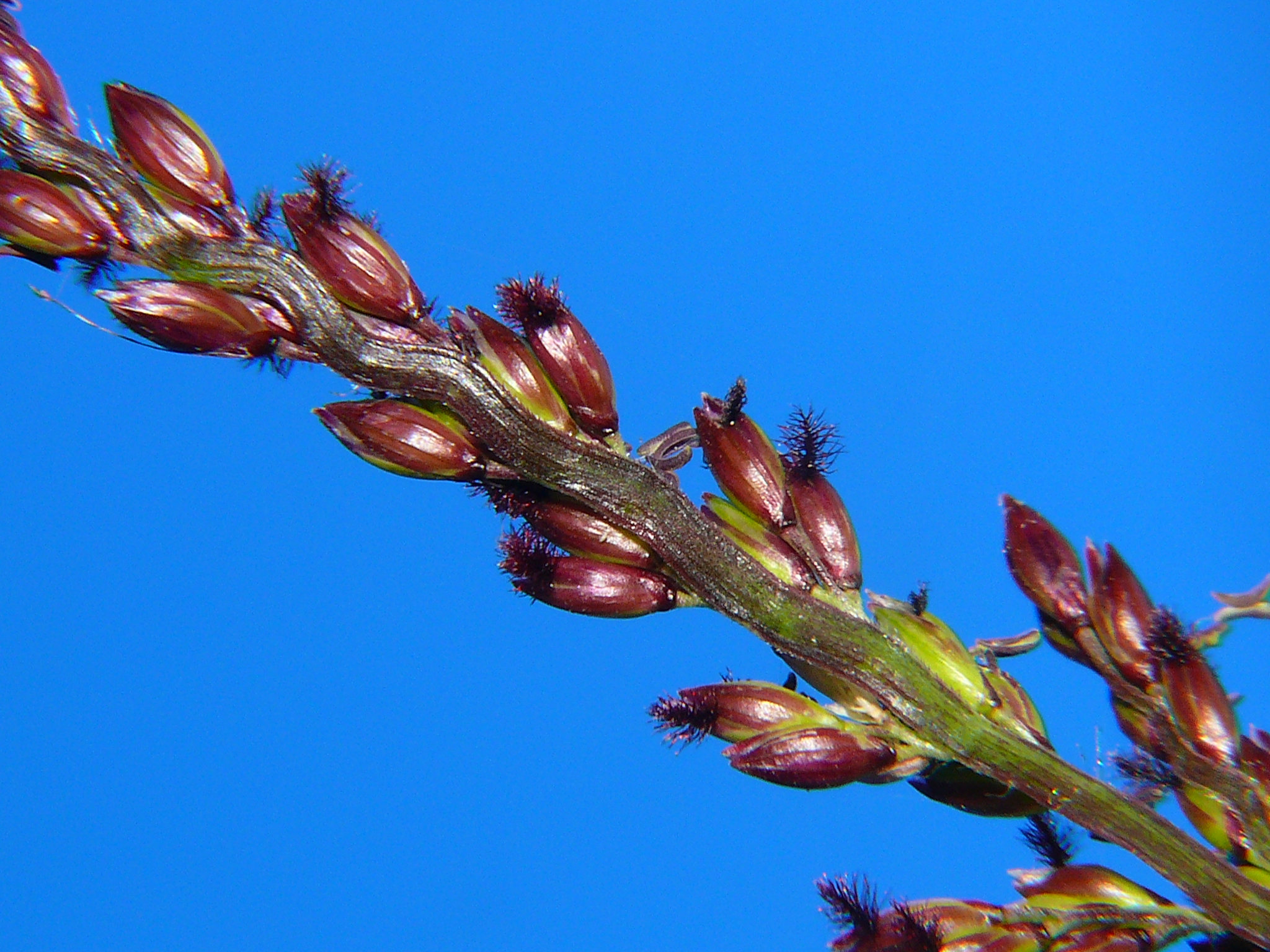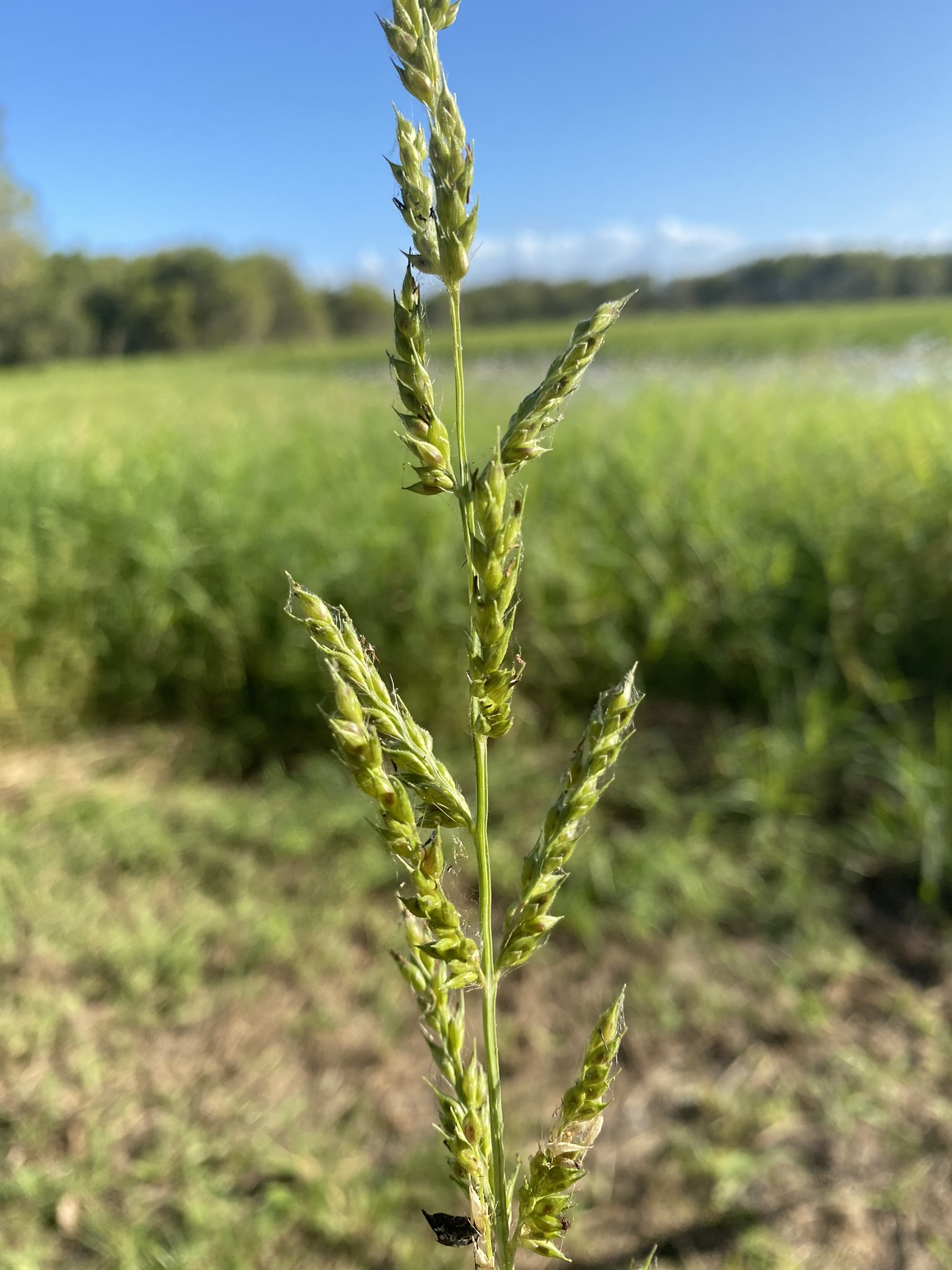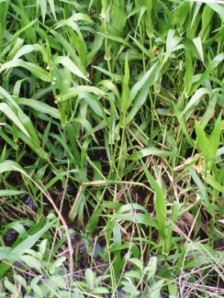|
|
Quick facts
- Native grasses in combination with para grass
- were traditionally used in ponded pasture systems. However, these systems were limited in their capacity due to the species only being able to grow in up to 30 cm of water[5]. The introduction of olive hymenachne and Aleman grass allowed ponds to be deeper, providing a succession of grass for feeding cattle and further drought proofing grazing properties that would traditionally have to removed their cattle in the dry season.
Olive hymenachne, para grass and Aleman Grass all require permanent or seasonally flooded areas with moist soils to grow. All three grasses spread by vegetative growth and are highly adapted to grow and spread in wet and waterlogged environments. Their tropical origins and intolerance to long dry periods and frost has meant they have readily naturalised in the tropical and subtropical parts of Australia, including, coastal central and north Queensland, subtropical lowlands of southeast Queensland and northern New South Wales, the Northern Territory, and northern Western Australia[10][7].
The key ecological features of features of Olive hymenachne para grass and Aleman Grass are outlined below:

Olive hymenachne:
- Perennial semi-aquatic, growing to 2.5 m[9][3].
- Limited by well-drained sites that dry out completely during the dry season[3][6].
- Grows in water depths up to 4m by forming floating rafts[3].
- Reproduces in Australia by seed and vegetatively from fragments. Seed is highly viable[9].
- Abundance declines sharply as salinity increases[3].

Para grass
- Perennial semi-aquatic grass growing to 1 m[9][1].
- Adapted to wet conditions, waterlogging and prolonged flooding[9].
- Not frost tolerant[1].
- Grows in water depths 0.3 -0.6 m, can withstand seasonal flood up to 2.2 m deep[1].
- Reproduces in Australia by seed and vegetatively from fragments[9].
- Moderately tolerant to salinity. Exposure to saltwater for 7 days inhibits photosynthesis and increases mortality rates[4].

Aleman grass:
- Perennial aquatic, semi-aquatic grass growing to 2.5 m[2].
- Generally, there is no growth under dry conditions unless there is a high-water table, but it re-establishes from stems and stolons with subsequent flooding[2].
- Grows in water that is seasonally more than 2 m deep[2].
- Reproduces vegetatively only, no viable seed is produced in Australia[2].
- Most tolerant to saltwater of the three species[4].
References
- ^ a b c , Hannan- Jones, M & Csurhes, S (2012), Invasive Species Risk Assessment, Para grass. [online], Queensland Government. Available at: https://www.daf.qld.gov.au/__data/assets/pdf_file/0004/65254/IPA-Para-Grass-Risk-Assessment.pdf.
- ^ a b c d , Hannan- Jones, M & Webber, J (2016), Invasive Plant Risk Assessment, Aleman grass. [online], Queensland Government. Available at: https://www.daf.qld.gov.au/__data/assets/pdf_file/0020/52256/IPA-Aleman-Grass-Risk-Assessment.pdf.
- ^ a b c d , Wearne, LJ, Clarkson, J, Grice, AC, Dekker van Klinke & R and Vitelli, JS (2010), 'The biology of Australian weeds 56. Hymenachne amplexicaulis (Rudge) Nees', Plant Protection Quarterly, vol. 25, no. 4, pp. 146-161.
- ^ a b Abbott, BN, Wallace, J, Nicholas, DM, Karim, F & Waltham, NJ (24 January 2020), 'Bund removal to re-establish tidal flow, remove aquatic weeds and restore coastal wetland services—North Queensland, Australia', PLOS ONE. [online], vol. 15, no. 1, p. e0217531, ed. J Hewitt. Available at: https://dx.plos.org/10.1371/journal.pone.0217531 [Accessed 1 June 2021].
- ^ Clarkson, JR (1991), The spread of pondage species beyond the pasture system – The risk and associated ecological consequences.
- ^ Csurhes, SM, Mackey, AP & Fitzsimmons, L (1999), 'Hymenachne (Hymenachne amplexicaulis) in Queensland', Pest Status Review Series. [online], Land Protection, Queensland Government. Available at: https://www.daf.qld.gov.au/__data/assets/pdf_file/0008/71828/IPA-Hymenachne-PSA.pdf.
- ^ Hymenachne | Department of Natural Resources and Environment Tasmania. [online] Available at: https://nre.tas.gov.au/invasive-species/weeds/weeds-index/declared-weeds-index/hymenachne [Accessed 24 May 2024].
- ^ Reid, B, Grice, T, Holtum, J, Nicholas, M, Wallace, J & Waltham, N (2018), Assessing the potential for controlling four invasive species (aleman grass, water hyacinth, olive hymenachne and para grass) using seawater in northern Australian coastal wetlands. [online], vol. 18/31, James Cook University and CSIRO Australia. Available at: https://www.researchgate.net/publication/328150151_Assessing_the_potential_for_controlling_four_invasive_species_aleman_grass_water_hyacinth_olive_hymenachne_and_para_grass_using_seawater_in_northern_Australian_coastal_wetlands.
- ^ a b c d e Threat abatement plan to reduce the impacts on northern Australia’s biodiversity by the five listed grasses. (2012). [online], Australian Government. Available at: https://www.dcceew.gov.au/sites/default/files/documents/five-listed-grasses-tap.pdf.
- ^ Urochloa mutica | WEEDS AUSTRALIA - profiles. [online] Available at: https://profiles.ala.org.au/opus/weeds-australia/profile/Urochloa%20mutica [Accessed 24 May 2024].
Last updated: 24 May 2024
This page should be cited as:
Department of Environment, Science and Innovation, Queensland (2024) Olive hymenachne, para grass and Aleman grass, WetlandInfo website, accessed 8 May 2025. Available at: https://wetlandinfo.des.qld.gov.au/wetlands/ecology/components/biota/flora/flora-weeds/pasture-grass.html
|

 — Department of the Environment, Tourism, Science and Innovation
— Department of the Environment, Tourism, Science and Innovation





